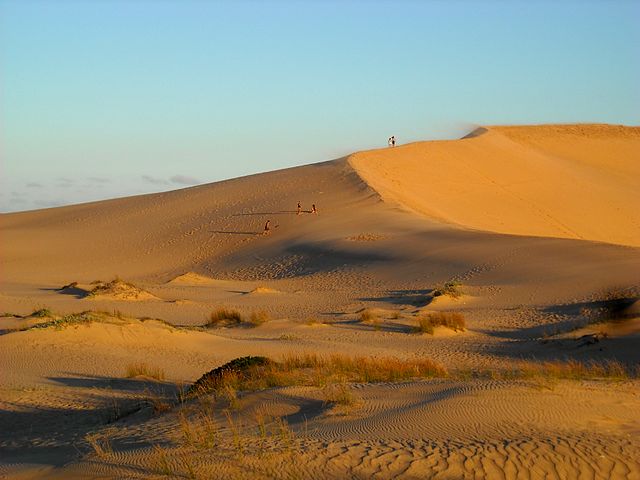Uruguay presents us a lot of sand and water in their Top-10 best photos. Enjoy beautiful water landscapes and peaceful nature captured by our users.
The Uruguay River

The Uruguay River is a river in South America. It flows from north to south and forms parts of the boundaries of Brazil, Argentina, and Uruguay, separating some of the Argentine provinces of La Mesopotamia from the other two countries. It passes between the states of Santa Catarina and Rio Grande do Sul in Brazil; forms the eastern border of the provinces of Misiones, Corrientes, and Entre Ríos in Argentina; and makes up the western borders of the departments of Artigas, Salto, Paysandú, Río Negro, Soriano, and Colonia in Uruguay.
The river measures about 1,838 kilometres (1,142 mi) in length and starts in the Serra do Mar in Brazil, where the Canoas River and the Pelotas River are joined, at about 200 metres (660 ft) above mean sea level. In this stage the river goes through uneven, broken terrain, forming rapids and falls. Its course through Rio Grande do Sul is not navigable.
White-tufted grebe

The white-tufted grebe is a species of grebe in the family Podicipedidae. Found in the southern half of South America, its natural habitat is freshwater lakes, ponds and sluggish streams.
The male and female white-tufted grebe look alike and are between 27 and 35 cm (11 and 14 in) in length. Adults in breeding plumage have a prominent black crest on the back of their heads. There is a large white tuft of feathers around the ear but otherwise the head, neck and back are black, with a slight greenish sheen, and the feathers of the mantle and back are narrowly bordered with brown. The underparts are a dull reddish-brown, often mottled with brown or grey. The secondary wing feathers are white, pale grey or have white tips. The eye is red, the beak black and the legs grey or olive-brown. Adults in non-breeding plumage are dark brown rather than black. The crest becomes inconspicuous, the sides of the head and throat are white and the white wing patches are retained. The neck and chest are buff, gradually paling to white on the belly. Immature birds resemble adults in non-breeding plumage but their throats and the sides of their necks have brown streaking.
Cabo Polonio

Cabo Polonio is a caserío (hamlet) located in the eastern coast of Uruguay in the Rocha Department.
Cabo Polonio has no roads leading to it and is located about 7 km from the main highway. It is accessible by walking through the dunes or by 4×4 vehicles.

The region has no electricity or running water for the few hundred houses of this town, and wind power and a few generators are used to power some of the posadas and grocery store. There is a lighthouse that gets power from the national grid. Residents obtain water from nearby water wells or collecting rain water.
Santa Lucía River

The Santa Lucía River is a river in Uruguay. The headwaters of the Santa Lucía River are in the Lavalleja department. For a large part of its course it forms the limit between the departments of Florida and San José on one bank and Canelones and Montevideo on the other. Its outlet is theRío de la Plata, forming a small delta, in which Tiger Island is located.
Rocha

Rocha is the capital city of the Rocha Department in Uruguay.
The city is located on the intersection of Route 9 with Route 15, about 70 kilometres (43 mi) northeast of San Carlos ofMaldonado Department. The stream Arroyo Rocha flows along the west limits of the city.
Diario Lagoon

Palace Cave

The Palace Cave is located at Flores Department, not far away from Trinidad, Uruguay.
It dates from the Late Cretaceous period and is composed of sandstone, which ferrified during the Paleocene.
It was first studied in 1877; in the early 20th century it was explored by Dr. Karl Walter.
The Cave has been subject of the creation of a geopark. UNESCO is considering it as a possible World Heritage site, due to its interest as a geopark.
The Palace Cave is to be seen at the coat of arms of Flores Department.
Quebrada de los Cuervos

The Quebrada de los Cuervos (Spanish for Crows Ravine) is an important landform in Treinta y Tres Department,Uruguay.
Crossed by the Yerbal Chico creek, it constitutes a natural protected area. This Important Bird Area (IBA) is inhabited by several endangered species, such as Agelaius flavus, Xolmis dominicanus, Limnoctites rectirostris,Sporophila cinnamomea, Sporophila ruficollis. The very name of this place refers to crow-like Cathartidae which breed on its cliffs: Cathartes burrovianus, Cathartes aura, and Coragyps atratus.
Lunarejo Valley

Lunarejo Valley contains multiple ravines, valleys and even gorges that create a scenic landscape. The valleys have sub-tropical types of vegetation and other plant species such as bromeliads and orchids. Its ravines and prairies have become home hundreds of bird species (with only about 150 identified), amphibians and reptiles. This biological richness has made the valley a valuable area not only as a sightseeing site but also as a habitat for many organisms.
Referencies:
- https://en.wikipedia.org/wiki/Uruguay_River
- https://en.wikipedia.org/wiki/White-tufted_grebe
- https://en.wikipedia.org/wiki/Cabo_Polonio
- https://en.wikipedia.org/wiki/Santa_Luc%C3%ADa_River
- https://en.wikipedia.org/wiki/Rocha,_Uruguay
- https://en.wikipedia.org/wiki/Palace_Cave
- https://en.wikipedia.org/wiki/Quebrada_de_los_Cuervos
- http://naturalwondersofsouthamerica.com/uruguay/

Se nota que las personas que fotografiaron no conocieron el norte del país, tengo en mis retines infinidades de atardeceres en la 31, rumbo a la Cuchilla de Haedo, es impresionante el paisaje…sin contar Valle Edén y muchos más que hay en Rivera, Artigas y Salto, en fin, ellos se lo pierden!